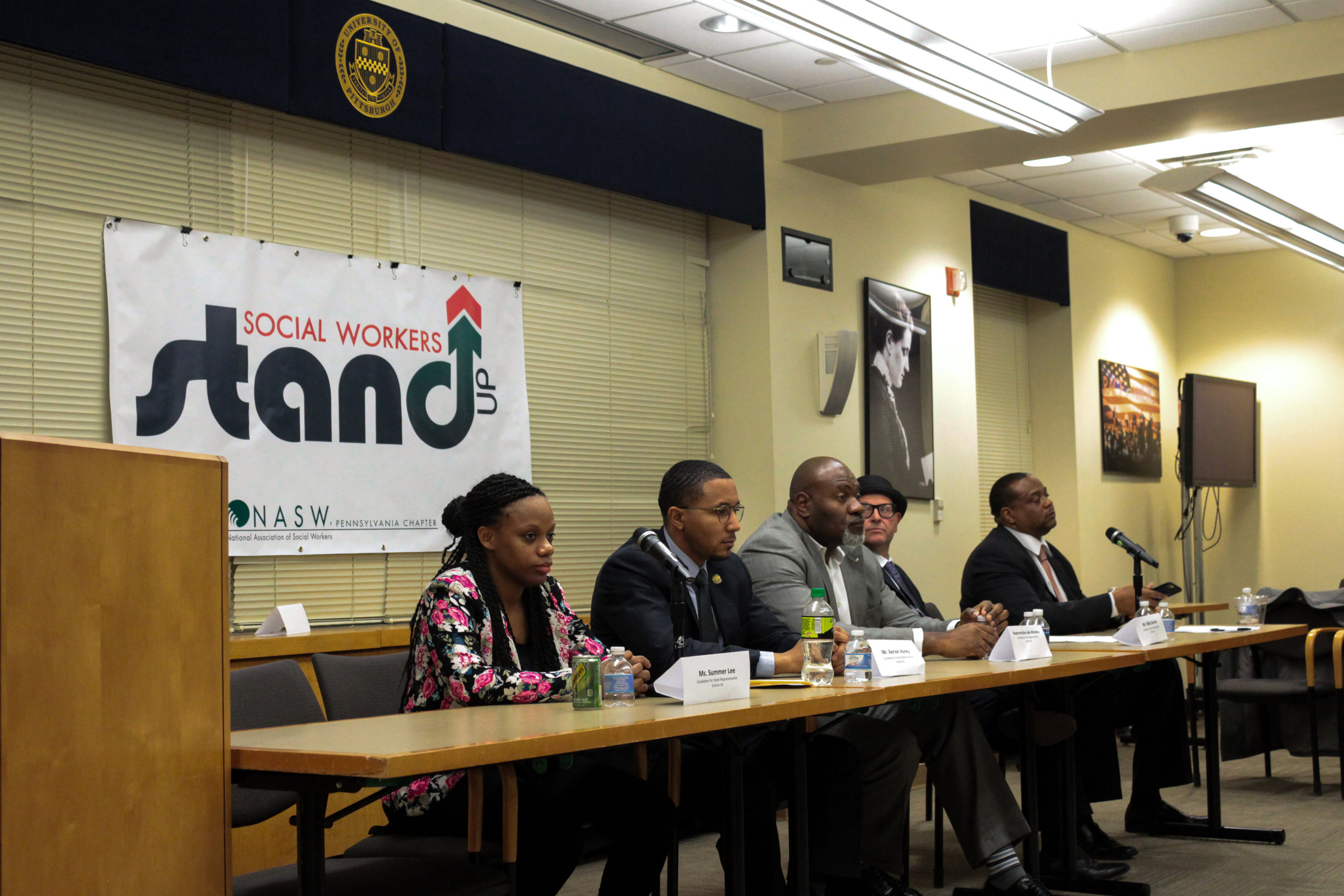Before Austin Davis became the first African American to be the Pennsylvania State Representative of District 35 on January 23, 2018, there were only two black legislators in Western Pa, Rep. Ed Gainey of District 24 and Rep. Jake Wheatley of District 19.
Now, more black people take public office than ever before, but the consensus is the progress is still not enough.
The disconnect between the establishment with power and community members who face every day struggles are because “Policymakers haven’t lived it,” Lee said at the National Association of Social Workers candidate’s panel on March 19, 2018. So, they have a hard time relating to people’s plight while one “half who live like the Jetsons and the other who live like the Flintstones,” Abney continued.
It comes down to the “covert” dealings of the Grand Old Party to maintain their influence. Abney said, “They don’t want people who don’t look like them to be in [power].” The Old Guard disenfranchises people by affecting their economics and all its connections, like education, job access, and transportation. On their way out, the G.O.P. still lurks to create disadvantages for incoming minority officials.
When Nikole Nesby became Duquesne's first woman African American mayor, the former Duquesne mayor Philip Krivacek and the city manager Frank Piccolino III, two white men, transferred the township's Redevelopment Authority funds of $1.3 million to a new non-profit called the Duquesne Business Advisory Corporation (DBAC), which lists the former mayor as the organization's president.
"They effectively made her ineffective by appropriating her funds elsewhere," Bellevue, Pa. Councilman Valon Pennington said. He was Nesby's classmate in their Local Government Academy which was instruction for newly elected officials. "They economically barred her from her office," Councilman Pennington finished.
Further, Councilman Pennington became the first non-white elected official in Bellevue history this January. He mentioned he suffered personal attacks on his family when the predominantly white community members would "dig into our backgrounds" to find financial and property information he said.
Black public officials and people face racial injustice like this regularly. Councilman Pennington recalls in 2017 when the first black male mayor of Camilla, Ga. Rufus Davis was denied the keys to his office in city hall for two years by a white privileged city council in a 70% black majority community (with a majority white police force who would've thought).
Actions like these limits the building of a black political foundation across the country and in Western Pa., which limits equality and progress nonetheless.




















